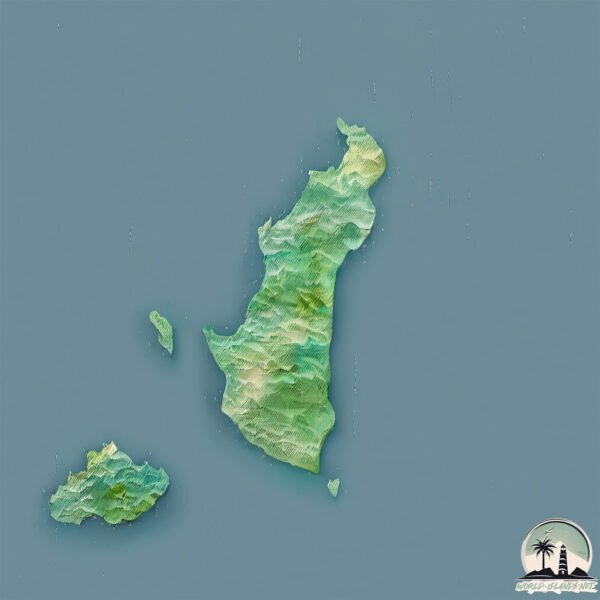Welcome to Nii Jima , a Temperate island in the Philippine Sea, part of the majestic Pacific Ocean. This guide offers a comprehensive overview of what makes Nii Jima unique – from its geography and climate to its population, infrastructure, and beyond. Dive into the details:
Geography and size of Nii Jima
Size: 23.3 km²Coastline: 36.7 kmOcean: Pacific OceanSea: Philippine SeaContinent: Asia
Nii Jima is a Medium Island spanning 23 km² with a coastline of 37 km.
Archipel: Nanpō Islands – An extension of the Japanese archipelago into the Pacific Ocean, known for their scenic beauty and diverse marine life.
Tectonic Plate: Eurasia – One of the world’s largest tectonic plates, the Eurasian Plate covers a significant portion of Europe and Asia. It’s characterized by diverse geological features, including the Ural Mountains, the European Plain, and the Himalayas formed from its collision with the Indian Plate.
The geographic heart of the island is pinpointed at these coordinates:
Climate and weather of Nii Jima
Climate Zone: TemperateClimate Details: Humid Subtropical ClimateTemperature: Hot Summer
Climate Characteristics: With continuous rainfall and hot summers, this climate is common in some coastal regions, supporting diverse vegetation.
Topography and nature of Nii Jima
Timezone: UTC+09:00Timezone places: Asia/TokyoMax. Elevation: 386 m Mean Elevation: 141 mVegetation: Evergreen Broadleaf ForestTree Coverage: 93%
The mean elevation is 141 m. The highest elevation on the island reaches approximately 386 meters above sea level. The island is characterized by Hills: Gently sloping landforms with rounded tops, having a maximum elevation between 200 and 500 meters. Hills contribute to a varied landscape on islands.
Dominating Vegetation: Evergreen Broadleaf Forest
Vegetation: 8 vegetation zones – Very Highly Diverse Island
Infrastructure and Travelling to Nii Jima
Does the island have a public airport? yes .
Does the island have a major port? no .
The mean population of Nii Jima is 112 per km². Nii Jima is Moderately Inhabited. The island belongs to Japan .
Continuing your journey, Kōzu Shima is the next notable island, situated merely km away.
Niijima - The Other Side of Tokyo : 80Days Travel
You don't know Tokyo until you've seen the Izu Islands. Located off the coast of Honshu, Japan's main island, these nine smaller ...
Niijima - The Other Side of Tokyo : 80Days Travel
You don't know Tokyo until you've seen the Izu Islands. Located off ...
You don't know Tokyo until you've seen the Izu Islands. Located off the coast of Honshu, Japan's main island, these nine smaller ...
Tokyo’s Niijima Island, the FAR SIDE (Wakago)
The far side of Niijima, Wakano MAP: ...
Video: Japan's new island Niijima still growing
The Japan Coast Guard says the new land mass created by a volcanic ...
The Japan Coast Guard says the new land mass created by a volcanic eruption off Japan's Pacific Coast might expand the ...
Japan is classified as Developed region: G7: Group of Seven – Major advanced economies, including Canada, France, Germany, Italy, Japan, the United Kingdom, and the United States. The level of income is High income: OECD.
News – Latest Updates and Headlines from Nii Jima
Stay informed with the most recent news and important headlines from Nii Jima. Here’s a roundup of the latest developments.
Loading...
Please note: The data used here has been primarily extracted from satellite readings. Deviations from exact values may occur, particularly regarding the height of elevations and population density. Land area and coastline measurements refer to average values at mean high tide.

